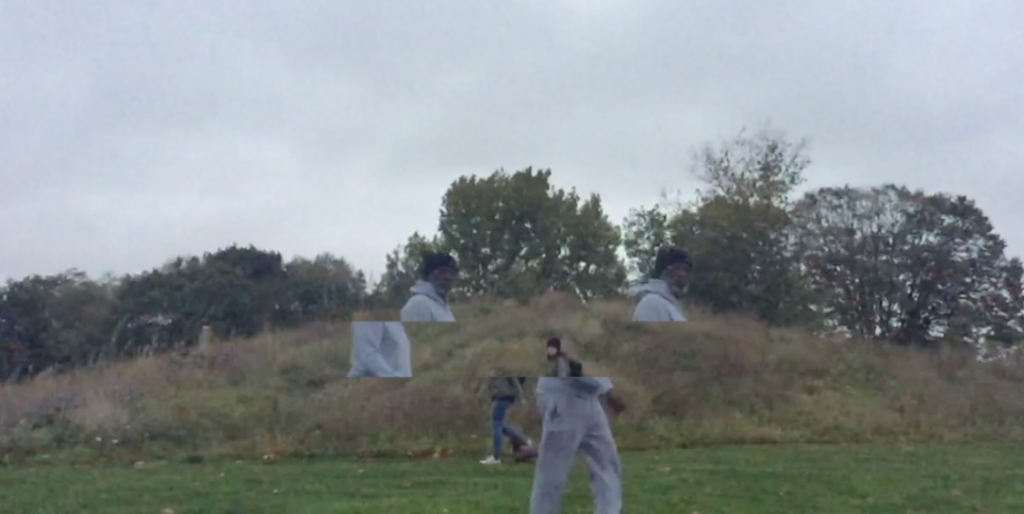I am currently working on a small book/publication, which displays every image of a landscape I’ve ever taken on my current phone (which I’ve had for around 4 years) paired with an image found on Flickr and taken on the same day, up to 2400 miles away from where I took my photo. The distance between the two photos is determined by the time of day when I took the photo in question, e.g. if it was taken at 16:23, the secondary image would have to be taken somewhere along the perimeter of a 1623 mile radius of the original photo’s location. This factor is a way in which I’ve tried to curb the level of control over the process, leaving the product up to a chance photographer in a chance location, generated by a number I unintentionally “chose” when I took the photo.
The idea is that when paired physically in a book, we may start to form connections between the two scenes that aren’t there. There have been a few occasions where the images have slight aesthetic similarities; formal coincidences. Even though I know that these don’t mean anything and are completely accidental, it’s hard not to believe that it’s a conscious choice, to romanticise it, to feel an connection (if unrequited) to the photographer on the other end of whatever-mile radius I typed into Google maps. Simultaneously, by pairing my own pictures with those of strangers, it’s dampened my own deeply personal connections to the often ambiguous and probably cheesy landscapes and sunsets stored in my phone. For me, they unlock whole days’ worth of memories surrounding them and I can usually remember which date and which exact location they were taken on, even if they’re years old. Archiving dates and events mentally is something I’ve always done instinctually and to a useless degree, and photos on my camera roll are an important part of solidifying that process. It’s therefore quite an uncomfortable experience when they’re stripped back down to the level of personal attachment that I feel towards photos of unknown places taken by unknown people.
Going through the highly repetitive system of inputting dates, distances and locations into a system and relying completely on chance for an outcome soon became incredibly tedious. However, I feel there’s something important about having a system and sticking to it, even if it results in a poor outcome. There are of course a number of artists who have already made art through obsessively rigorous systems that they devise for themselves and then stick to, such as John Cage’s sound pieces reliant on the audience, Dieter Roth and his piece ‘Flat Waste’, Donald Judd and his Fibonacci-related works, and other artists who adopted the Minimalist approach of not making decisions based on taste but instead reliant on an external, non-negational factor.
So far I have 218 items, making approximately 168 pairings. I have added more every day since I started the project.

